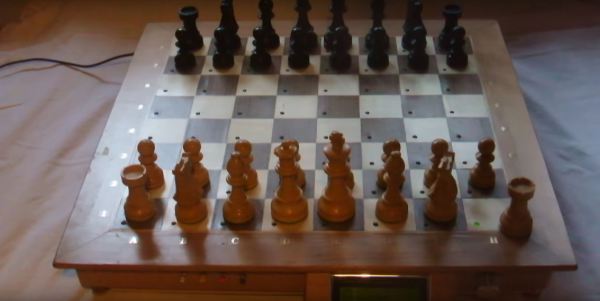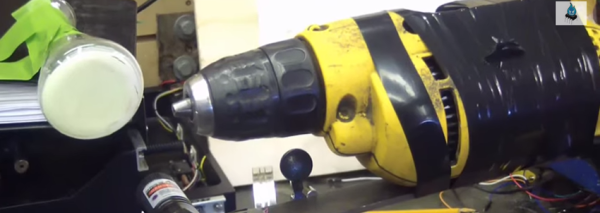Lenz’s Law is one of those physics tricks that look like magic if you don’t understand what’s happening. [Seth Robinson] was inspired by the way eddy currents cause a cylindrical neodymium magnet to levitate inside a rotating copper tube, so he cast a spherical copper cage to levitate a magnetic sphere.
Metal casting is an art form that might seem simple at first, but is very easy to screw up. Fortunately [Seth] has significant experience in the field, especially lost-PLA metal casting. While the act of casting is quick, the vast majority of the work is in the preparation process. Video after the break.
[Seth] started by designing and 3D printing a truncated icosahedron (basically a low-poly sphere) in two interlocking halves and adding large sprues to each halve. Over a week, the PLA forms were repeatedly coated in layers of ceramic slurry and silica sand, creating a thick shell around them. The ceramic forms were then heated to melt and pour out the PLA and fired at 870°C/1600°F to achieve full hardness.
With the molds prepared, the molten copper is poured into them and allowed to cool. To avoid damaging the soft copper parts when breaking away the mold, [Seth] uses a sandblaster to cut it away sections. The quality of the cast parts is so good that 3D-printed layer lines are visible in the copper, but hours of cleanup and polishing are still required to turn them into shiny parts. Even without the physics trick, it’s a work of art. A 3d printed plug with a brass shaft was added on each side, allowing the assembly to spin on a 3D-printed stand.
[Seth] placed a 2″ N52 neodymium spherical magnet inside, and when spun at the right speed, the magnet levitated without touching the sides. Unfortunately, this effect doesn’t come across super clearly on video, but we have no doubt it would make for a fascinating display piece and conversation starter.
Using and abusing eddy currents makes for some very interesting projects, including hoverboards and magnetic torque transfer on a bicycle.
Continue reading “Levitating Magnet In A Spherical Copper Cage”


















